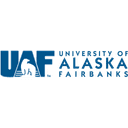Master satellite-based wildfire detection and monitoring techniques. Learn to use remote sensing tools for fire management.
Master satellite-based wildfire detection and monitoring techniques. Learn to use remote sensing tools for fire management.
This comprehensive course explores how remote sensing technology helps manage wildfires in Alaska and beyond. Led by University of Alaska Fairbanks experts, students learn to use satellite imagery and geospatial tools for wildfire detection, monitoring, and impact assessment. The curriculum covers fire behavior, climate conditions, and ecosystem impacts while providing hands-on experience with professional mapping tools. Participants gain practical skills in accessing real-time fire data and using ArcGIS Pro for analysis.
Instructors:
English
English, Spanish
What you'll learn
Understand climate conditions and factors contributing to wildfire occurrence
Master remote sensing principles and satellite imagery interpretation
Learn to detect and monitor wildfires using satellite data
Develop skills in using ArcGIS Pro for fire mapping and analysis
Access and utilize real-time wildfire monitoring resources
Assess wildfire impacts on ecosystems and communities
Skills you'll gain
This course includes:
PreRecorded video
Graded assignments, exams
Access on Mobile, Tablet, Desktop
Limited Access access
Shareable certificate
Closed caption
Get a Completion Certificate
Share your certificate with prospective employers and your professional network on LinkedIn.
Created by
Provided by

Top companies offer this course to their employees
Top companies provide this course to enhance their employees' skills, ensuring they excel in handling complex projects and drive organizational success.





There are 4 modules in this course
This course provides comprehensive training in using remote sensing technology for wildfire management. Students learn about wildfire behavior, climate conditions, and ecosystem impacts in Alaska's active fire zones. The curriculum covers satellite imagery interpretation, fire detection techniques, and geospatial mapping using professional tools like ArcGIS Pro. Participants gain practical experience accessing real-time fire data and creating maps to support firefighting efforts. The course emphasizes hands-on learning with professional tools and resources used in actual wildfire management.
An overview of wildfires in Alaska
Module 1 · 4 Hours to complete
An introduction to remote sensing of Earth
Module 2 · 4 Hours to complete
Remote sensing applications on wildfires
Module 3 · 4 Hours to complete
Remote sensing resources
Module 4 · 4 Hours to complete
Fee Structure
Instructors

4 Courses
Distinguished Arctic Scientist and Remote Sensing Expert
Santosh K. Panda serves as Associate Professor of GIS and Remote Sensing at the University of Alaska Fairbanks, where he holds joint appointments with the Geophysical Institute and the Institute of Agriculture, Natural Resources and Extension. His research focuses on understanding Arctic landscape dynamics, particularly permafrost response to climate change and its effects on Arctic systems. After completing his PhD in Geology from UAF, he has pioneered high-resolution permafrost modeling across Alaska's national parks and developed innovative approaches to mapping boreal forest wildfire patterns using hyperspectral remote sensing. His work includes significant community engagement, notably building capacity for permafrost monitoring in native villages of Telida and Nikolai, and mapping Colville River bathymetry to support safe river navigation. As principal investigator for the Alaska NSF EPSCoR Fire and Ice project, he leads research on improving boreal wildfire fuel mapping. His publications have garnered over 795 citations, with significant contributions to permafrost dynamics modeling, remote sensing applications, and Arctic landscape change analysis. Beyond research, he maintains an active teaching role in remote sensing and GIS at both undergraduate and graduate levels while advancing the application of spatial technologies to understand Arctic environmental changes.

4 Courses
Distinguished Remote Sensing Expert and Boreal Forest Researcher
Dr. Anushree Badola serves as Postdoctoral Researcher at the Institute of Agriculture, Natural Resources and Extension, University of Alaska Fairbanks, where she specializes in hyperspectral remote sensing and machine learning applications for forestry and agriculture. Her groundbreaking research includes developing novel methods to simulate AVIRIS-NG hyperspectral imagery from Sentinel-2 data for improved vegetation and wildfire fuel mapping in boreal Alaska. After earning her Master's in Geoinformatics from the University of Twente and IIRS, ISRO, Dehradun, she completed her PhD at UAF's Geophysical Institute. Her work with the Alaska NSF EPSCoR Fire and Ice project has significantly advanced boreal forest monitoring techniques, achieving improved classification accuracies from 77.8% with Sentinel-2 to 94.4% with AVIRIS-NG data. Her research portfolio includes innovative approaches to tree species mapping in tropical forests, sub-pixel needleleaf cover fraction estimation in boreal forests, and development of spectral reconstruction methods for vegetation mapping. As a skilled programmer in Python and R with expertise in various GIS tools including QGIS, ArcGIS, ENVI, and Erdas Imagine, she continues to advance the field of remote sensing while focusing on improving wildfire fuel mapping technologies for better forest management.
Testimonials
Testimonials and success stories are a testament to the quality of this program and its impact on your career and learning journey. Be the first to help others make an informed decision by sharing your review of the course.
Frequently asked questions
Below are some of the most commonly asked questions about this course. We aim to provide clear and concise answers to help you better understand the course content, structure, and any other relevant information. If you have any additional questions or if your question is not listed here, please don't hesitate to reach out to our support team for further assistance.



